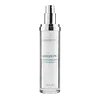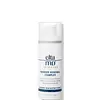What's inside
What's inside
 Key Ingredients
Key Ingredients

 Benefits
Benefits

 Concerns
Concerns

 Ingredients Side-by-side
Ingredients Side-by-side

Water
Skin ConditioningGlycerin
HumectantCetearyl Alcohol
EmollientIsononyl Isononanoate
EmollientPyrus Malus Fruit Extract
Skin ConditioningPotassium Cetyl Phosphate
EmulsifyingTribehenin
EmollientGlyceryl Caprylate
EmollientSodium Polyacryloyldimethyl Taurate
Emulsion StabilisingDisodium Lauriminodipropionate Tocopheryl Phosphates
CleansingSqualane
EmollientLactobacillus Ferment
Skin ConditioningSilica
AbrasivePropanediol
SolventTrisodium Ethylenediamine Disuccinate
Caprylic/Capric Triglyceride
MaskingLycium Barbarum Fruit Extract
AstringentBetaine
HumectantGlyceryl Undecylenate
EmollientCetyl Palmitate
EmollientSorbitan Stearate
EmulsifyingPolysorbate 80
EmulsifyingOpuntia Ficus-Indica Stem Extract
Skin ConditioningCalcium Gluconate
HumectantGluconolactone
Skin ConditioningTremella Fuciformis Sporocarp Extract
AntioxidantSodium Hyaluronate
HumectantCitric Acid
BufferingHydrogenated Lecithin
EmulsifyingGlucose
HumectantHydrolyzed Pea Protein
EmollientTocopherol
AntioxidantSodium Chloride
MaskingPalmitoyl Tetrapeptide-10
Skin ConditioningSodium Succinate
BufferingPhenoxyethanol
PreservativeSodium Benzoate
MaskingBenzoic Acid
MaskingDehydroacetic Acid
PreservativeWater, Glycerin, Cetearyl Alcohol, Isononyl Isononanoate, Pyrus Malus Fruit Extract, Potassium Cetyl Phosphate, Tribehenin, Glyceryl Caprylate, Sodium Polyacryloyldimethyl Taurate, Disodium Lauriminodipropionate Tocopheryl Phosphates, Squalane, Lactobacillus Ferment, Silica, Propanediol, Trisodium Ethylenediamine Disuccinate, Caprylic/Capric Triglyceride, Lycium Barbarum Fruit Extract, Betaine, Glyceryl Undecylenate, Cetyl Palmitate, Sorbitan Stearate, Polysorbate 80, Opuntia Ficus-Indica Stem Extract, Calcium Gluconate, Gluconolactone, Tremella Fuciformis Sporocarp Extract, Sodium Hyaluronate, Citric Acid, Hydrogenated Lecithin, Glucose, Hydrolyzed Pea Protein, Tocopherol, Sodium Chloride, Palmitoyl Tetrapeptide-10, Sodium Succinate, Phenoxyethanol, Sodium Benzoate, Benzoic Acid, Dehydroacetic Acid
Water
Skin ConditioningEthylhexyl Isononanoate
EmollientNiacinamide
SmoothingGlycerin
HumectantGlyceryl Stearate
EmollientPEG-100 Stearate
Dimethicone
EmollientCeramide NP
Skin ConditioningCholesterol
EmollientCeramide Eos
Skin ConditioningCetyl Alcohol
EmollientCeramide Ns
Skin ConditioningCeteareth-25
CleansingCeramide EOP
Skin ConditioningCaprooyl Sphingosine
Skin ConditioningCaprooyl Phytosphingosine
Skin ConditioningCeramide AP
Skin ConditioningHyaluronic Acid
HumectantHydroxyethyl Acrylate/Sodium Acryloyldimethyl Taurate Copolymer
Emulsion StabilisingXylitylglucoside
HumectantSqualane
EmollientAnhydroxylitol
HumectantPEG-7 Trimethylolpropane Coconut Ether
EmulsifyingPolyisobutene
Piptadenia Colubrina Peel Extract
HumectantActinidia Chinensis Fruit Extract
EmollientBromelain
Skin ConditioningTocopherol
AntioxidantXylitol
HumectantFicin
Skin ConditioningGlutamine
Skin ConditioningBiotin
AntiseborrhoeicProline
Skin ConditioningBehenic Acid
CleansingCarbomer
Emulsion StabilisingCitric Acid
BufferingSodium Hydroxide
BufferingButylene Glycol
HumectantBenzyl Alcohol
PerfumingPotassium Sorbate
PreservativePhenoxyethanol
PreservativeHexadecane
PerfumingSodium Bisulfite
AntioxidantDisodium EDTA
Water, Ethylhexyl Isononanoate, Niacinamide, Glycerin, Glyceryl Stearate, PEG-100 Stearate, Dimethicone, Ceramide NP, Cholesterol, Ceramide Eos, Cetyl Alcohol, Ceramide Ns, Ceteareth-25, Ceramide EOP, Caprooyl Sphingosine, Caprooyl Phytosphingosine, Ceramide AP, Hyaluronic Acid, Hydroxyethyl Acrylate/Sodium Acryloyldimethyl Taurate Copolymer, Xylitylglucoside, Squalane, Anhydroxylitol, PEG-7 Trimethylolpropane Coconut Ether, Polyisobutene, Piptadenia Colubrina Peel Extract, Actinidia Chinensis Fruit Extract, Bromelain, Tocopherol, Xylitol, Ficin, Glutamine, Biotin, Proline, Behenic Acid, Carbomer, Citric Acid, Sodium Hydroxide, Butylene Glycol, Benzyl Alcohol, Potassium Sorbate, Phenoxyethanol, Hexadecane, Sodium Bisulfite, Disodium EDTA
Ingredients Explained
These ingredients are found in both products.
Ingredients higher up in an ingredient list are typically present in a larger amount.
Citric Acid is an alpha hydroxy acid (AHA) naturally found in citrus fruits like oranges, lemons, and limes.
Like other AHAs, citric acid can exfoliate skin by breaking down the bonds that hold dead skin cells together. This helps reveal smoother and brighter skin underneath.
However, this exfoliating effect only happens at high concentrations (20%) which can be hard to find in cosmetic products.
Due to this, citric acid is usually included in small amounts as a pH adjuster. This helps keep products slightly more acidic and compatible with skin's natural pH.
In skincare formulas, citric acid can:
While it can provide some skin benefits, research shows lactic acid and glycolic acid are generally more effective and less irritating exfoliants.
Most citric acid used in skincare today is made by fermenting sugars (usually from molasses). This synthetic version is identical to the natural citrus form but easier to stabilize and use in formulations.
Read more about some other popular AHA's here:
Learn more about Citric AcidGlycerin is already naturally found in your skin. It helps moisturize and protect your skin.
A study from 2016 found glycerin to be more effective as a humectant than AHAs and hyaluronic acid.
As a humectant, it helps the skin stay hydrated by pulling moisture to your skin. The low molecular weight of glycerin allows it to pull moisture into the deeper layers of your skin.
Hydrated skin improves your skin barrier; Your skin barrier helps protect against irritants and bacteria.
Glycerin has also been found to have antimicrobial and antiviral properties. Due to these properties, glycerin is often used in wound and burn treatments.
In cosmetics, glycerin is usually derived from plants such as soybean or palm. However, it can also be sourced from animals, such as tallow or animal fat.
This ingredient is organic, colorless, odorless, and non-toxic.
Glycerin is the name for this ingredient in American English. British English uses Glycerol/Glycerine.
Learn more about GlycerinPhenoxyethanol is a preservative that has germicide, antimicrobial, and aromatic properties. Studies show that phenoxyethanol can prevent microbial growth. By itself, it has a scent that is similar to that of a rose.
It's often used in formulations along with Caprylyl Glycol to preserve the shelf life of products.
Squalane is an emollient that helps the skin hold onto moisture. It's an oily liquid that occurs naturally in certain types of fish and plant oils.
Because squalane boosts hydration in the skin, it also comes with plenty of benefits: it is an antioxidant and can help fight free radicals and skin damage. Squalane is also found to have a detoxifying effect when applied.
Squalane comes from squalene, which occurs naturally within the sebum of our skin. It is one of the oils our skin produces to keep itself hydrated. Squalane is the hydrogenated version of squalene and has a longer shelf life.
Research shows that squalane is non-irritating (even at 100% concentration).
In general, it's a fantastic ingredient. It does a great job at hydrating the skin, and it's suitable for those with sensitive skin.
The source of squalane may impact malassezia / fungal acne. This is because olive oil derived squalane can contain impurities such as fatty acids and plant waxes. Sugarcane derived squalane is recommended for anyone with malassezia concerns.
Is squalane vegan?
This depends on the source. Squalane can be derived from both plants and animals. Most squalane used in skincare comes from plants.
Please note: the source of squalane is only known if disclosed by the brand. We recommend reaching out to the brand if you have any questions about their squalane.
Read more about squalene with an "e".
Is squalane an oil?
Squalane is often called an oil, but it’s technically not; it’s a hydrocarbon, meaning it’s only made of carbon and hydrogen, unlike true oils which are triglycerides made of fatty acids and glycerol.
The term “oil-free” isn’t regulated, so companies can define it however they want. Some exclude all oils, while others just avoid mineral oil or comedogenic oils.
While some people avoid oils thinking they cause breakouts, the right kind of oil (or oil-like ingredient like squalane) can actually help balance and hydrate your skin. It’s worth testing out simple oils or squalane to see what works best for your skin.
Learn more about SqualaneTocopherol (also known as Vitamin E) is a common antioxidant used to help protect the skin from free-radicals and strengthen the skin barrier. It's also fat soluble - this means our skin is great at absorbing it.
Vitamin E also helps keep your natural skin lipids healthy. Your lipid skin barrier naturally consists of lipids, ceramides, and fatty acids. Vitamin E offers extra protection for your skin’s lipid barrier, keeping your skin healthy and nourished.
Another benefit is a bit of UV protection. Vitamin E helps reduce the damage caused by UVB rays. (It should not replace your sunscreen). Combining it with Vitamin C can decrease sunburned cells and hyperpigmentation after UV exposure.
You might have noticed Vitamin E + C often paired together. This is because it is great at stabilizing Vitamin C. Using the two together helps increase the effectiveness of both ingredients.
There are often claims that Vitamin E can reduce/prevent scarring, but these claims haven't been confirmed by scientific research.
Learn more about TocopherolWater. It's the most common cosmetic ingredient of all. You'll usually see it at the top of ingredient lists, meaning that it makes up the largest part of the product.
So why is it so popular? Water most often acts as a solvent - this means that it helps dissolve other ingredients into the formulation.
You'll also recognize water as that liquid we all need to stay alive. If you see this, drink a glass of water. Stay hydrated!
Learn more about Water